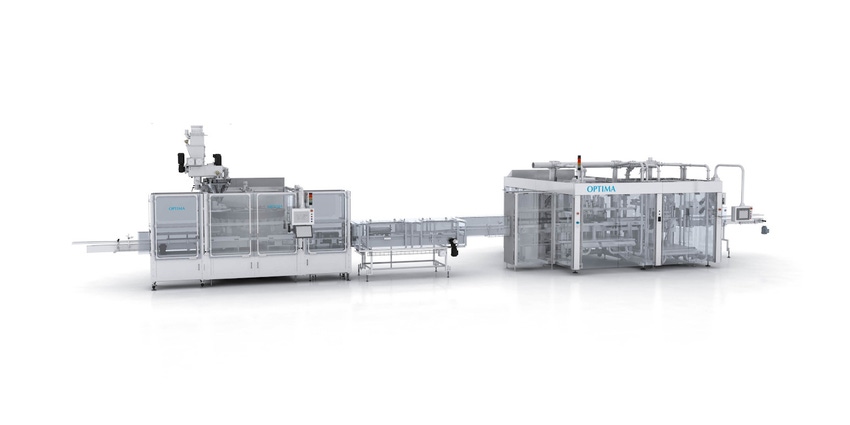Optima Consumer has developed a solution concept for the fully automated evacuation, gassing and seaming of infant formula containers.
November 12, 2020

Sensitive products like infant formula demand completely safe manufacturing processes. Optima Consumer responded to increased awareness about product safety by conducting extensive product-based market research. These demands by the market were translated into the Optima EGS, a new machine designed for the fully automatic evacuation, gassing, and seaming of infant formula products.
"The Optima FS filling machine and the Optima EGS enable us to supply the centerpiece of infant formula production lines from a single source," said Christoph Held, the managing director of Optima consumer GmbH. "The Optima EGS is our response to today's market demands. When developing it, the company focused on maximum production reliability, resulting in high product quality and the conservation of resources.
The first EGS was put into operation in mid-2019 at the Mittelelbe dairy plant, also known as Elb-Milch. "The Optima EGS is a perfectly adapted system that combines high operating speeds and maximum safety and quality levels," said Uwe Bedau, the managing director of Elb-Milch. The company is part of the Krüger Group and has been producing dry milk products in Stendal since 1991. “Officially, the residual oxygen levels are lower than 1%, and so are in a range that meets all the requirements of modern infant nutrition. In reality, in production the values are usually much lower than this.”
Another noteworthy feature is its compact design, as the total cost of ownership (TCO) is an important basis for deciding whether to invest in new machines and systems. Bedau added, "All of the functions – evacuation, gassing, and seaming – are contained within a small area." This effectively lowers the operating costs for the clean room. The space requirement has been reduced by more than 40% compared to conventional post-gassing systems. The EGS also operates in complete harmony with the high speeds of the FS filling machine. "These points, along with Optima employees' commitment, has led us to purchase the Optima EGS following the pilot phase," Bedau explained. A Chinese customer has also already commissioned Optima to supply a complete high-care room – the heart of infant formula lines.
Track and Tracing of All Relevant Process Parameters
As well as the machine's small footprint, users also benefit from the clear traceability of all the containers. With the EGS, it is possible to assign important production data to each container in a clear and traceable way via the processing procedures. This also includes documentation of all process parameters, for instance the negative pressure stages for meeting the residual oxygen values which are required for each individual can at every step in the process. This is possible because each can is evacuated, gassed, and seamed individually. Production data can be stored using the line management system developed by Optima, and critical key figures are clearly displayed. It also means that entire production lines can be networked with machines made by different manufacturers, so optimizing overall equipment effectiveness in a targeted way. When they are used in combination with software tools, for example for predictive maintenance to increase machine availability, Optima Smart Services make production processes even more reliable and efficient.
Patented Functional Cover Prevents Contamination
In the past, foreign bodies found in the product have resulted in recall measures being taken, so protecting unsealed cans is vital. This need is met by the patented function lid. The cans are not transported open once the product has been added. They are closed with a function lid during evacuation and gassing. This eliminates the need for the laborious additional function of clinching, so reducing the risk of imploding cans.
Challenging products, some of which contain new ingredients, demand increased product protection. The aim is to achieve reduced residual oxygen levels. This need has been met by an evacuation process which has been specially developed for infant formula. The product is "brought to the boil" in the process via different pressure stages without the need for valves and the oxygen contained in the product is released. Depending on the product, a residual oxygen content of 0.5% is achieved with an output of up to 250 cans per minute.
Optima Packaging Group GmbH, +49 791 506-0 Stuttgart, Germany www.optima-packaging.com
About the Author(s)
You May Also Like




